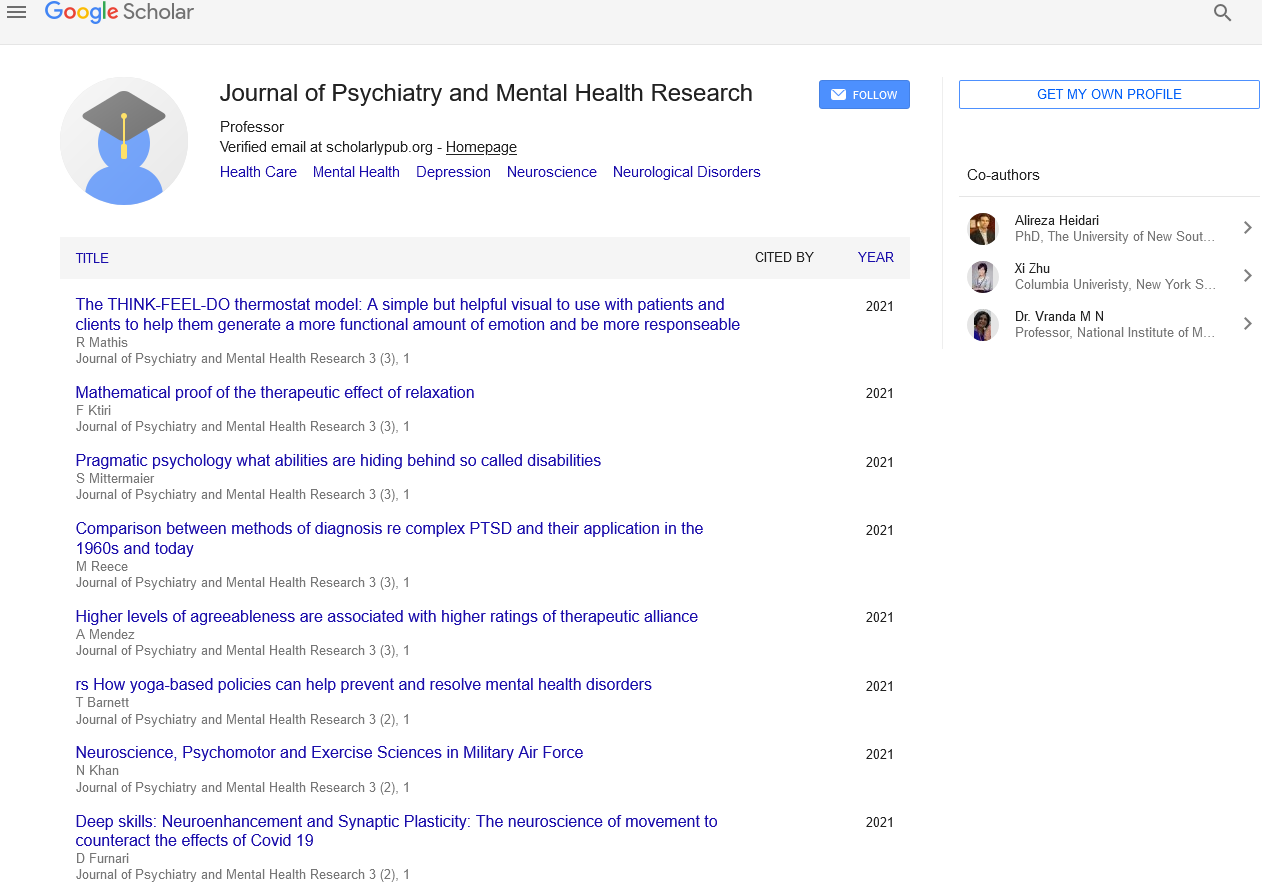dementia manifests as a set of related symptoms which usually surface when the brain is damaged by injury or disease
Received: 03-Jan-2024 Editor assigned: 05-Jan-2024 Accepted Date: Jan 14, 2024; Reviewed: 08-Jan-2024 Revised: 12-Jan-2024 Published: 23-Jan-2024
This open-access article is distributed under the terms of the Creative Commons Attribution Non-Commercial License (CC BY-NC) (http://creativecommons.org/licenses/by-nc/4.0/), which permits reuse, distribution and reproduction of the article, provided that the original work is properly cited and the reuse is restricted to noncommercial purposes. For commercial reuse, contact reprints@pulsus.com
Description
The symptoms involve progressive impairments in memory, thinking, and behavior, which negatively impact a person's ability to function and carry out everyday activities. Aside from memory impairment and a disruption in thought patterns, the most common symptoms include emotional problems, difficulties with language, and decreased motivation. The symptoms may be described as occurring in a continuum over several stages. Consciousness is not affected. Dementia ultimately has a significant effect on the individual, caregivers, and relationships in general. A diagnosis of dementia requires a change from a person's usual mental functioning and a greater cognitive decline than what is caused by normal aging. Several diseases and injuries to the brain, such as a stroke, can give rise to dementia. However, the most common cause is Alzheimer's disease, a neurodegenerative disorder. The Diagnostic and Statistical Manual of Mental Disorders, Fifth Edition (DSM-5), has re-described dementia as a major neurocognitive disorder with varying degrees of severity and many causative subtypes. The International Classification of Diseases (ICD-11) also classes dementia as a neurocognitive disorder with many forms or subclasses. Dementia is listed as an acquired brain syndrome, marked by a decline in cognitive functions, and is contrasted with neurodevelopmental disorders. Causative subtypes of dementia may be based on a known potential cause such as Parkinson's disease, for Parkinson's disease dementia; Huntington's disease for Huntington's disease dementia; vascular disease for vascular dementia; brain injury including stroke often results in vascular dementia; or many other medical conditions including HIV infection for HIV dementia; and prion diseases. Subtypes may be based on various symptoms possibly due to a neurodegenerative disorder such as Alzheimer's disease; frontotemporal lobar degeneration for frontotemporal dementia; or Lewy body disease for dementia with Lewy bodies. More than one type of dementia, known as mixed dementia, may exist together.
Diagnosis is usually based on history of the illness and cognitive testing with imaging. Blood tests may be taken to rule out other possible causes that may be reversible such as an underactive thyroid, and to determine the subtype. One commonly used cognitive test is the Mini-Mental State Examination. The greatest risk factor for developing dementia is aging, however dementia is not a normal part of aging. Several risk factors for dementia, such as smoking and obesity, are preventable by lifestyle changes. Screening the general older population for the disorder is not seen to affect the outcome.
Stages
The course of dementia is often described in four stages that show a pattern of progressive cognitive and functional impairment. However, the use of numeric scales allow for more detailed descriptions. These scales include: the Global Deterioration Scale for Assessment of Primary Degenerative Dementia (GDS or Reisberg Scale), the Functional Assessment Staging Test (FAST), and the Clinical Dementia Rating (CDR). Using the GDS which more accurately identifies each stage of the disease progression, a more detailed course is described in seven stages – two of which are broken down further into five and six degrees. Stage 7(f) is the final stage.
Prodromal
Pre-dementia states considered as prodromal are mild cognitive impairment (MCI), and mild behavioral impairment (MBI) Kynurenine is a metabolite of tryptophan that regulates microbiome signalling, immune cell response, and neuronal excitation.
A disruption in the kynurenine pathway may be associated with the neuropsychiatric symptoms and cognitive prognosis in mild dementia. In this stage signs and symptoms may be subtle. Often, the early signs become apparent when looking back. In MCI, changes in the person's brain have been happening for a long time, but symptoms are just beginning to appear. These problems, however, are not severe enough to affect daily function. If and when they do, the diagnosis becomes dementia. They may have some memory trouble and trouble finding words, but they solve everyday problems and competently handle their life affairs.





